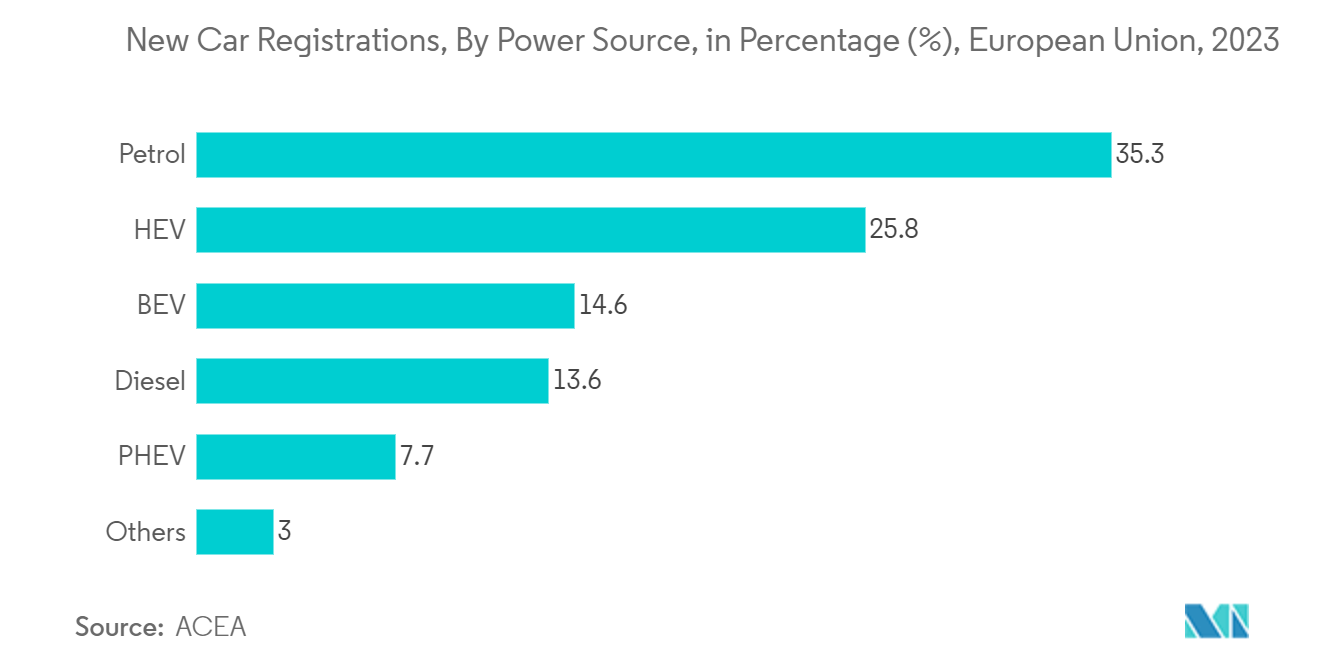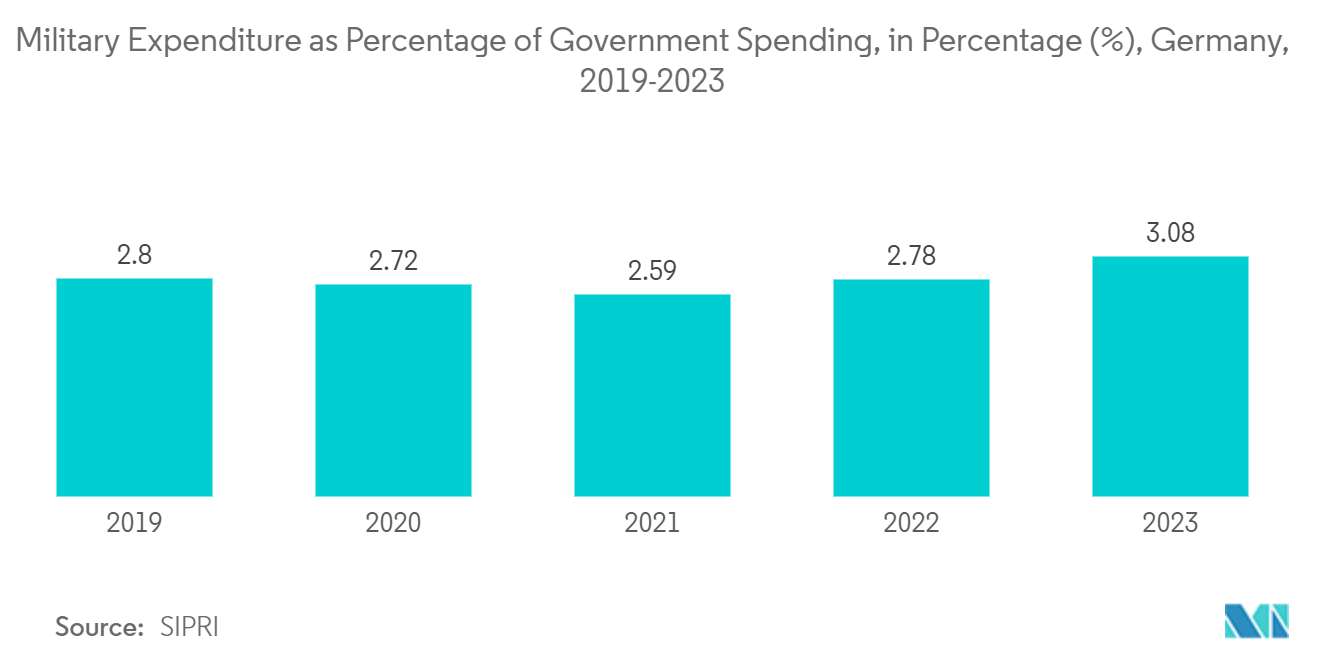Market Trends of EMEA Frequency Control And Timing Devices Industry
Automotive Industry to be the Fastest Growing End User
- In the automotive industry, frequency control and timing devices are used in ADAS for adaptive cruise control, lane assistance, and collision avoidance, infotainment systems for smooth music playback and accurate GPS functionality, telematics for real-time tracking and connected vehicles, and others. They are also used in electric vehicles to coordinate the operations of electric motors.
- The automotive segment presents promising opportunities for vendors operating in the EMEA frequency control and timing devices market, as the importance of these devices has been increasing in modern automobiles.
- Autonomous driving, electrification, connectivity, and shared vehicles are the trends driving market growth in the automotive sector. Automobiles today contain several high-performance electronic systems that rely on precision timing technology for stable, accurate frequency control of digital components, ranging from application processors to microcontrollers to FPGAs. According to SiTime, a leading frequency control and timing device provider, a typical automobile uses up to 70 timing devices to keep the electrical and electronic systems operating smoothly.
- The market growth in the EMEA region may be attributed to changing consumer preferences, technological advancements, and the increasing popularity of electric vehicles. With the automotive sector shifting toward electric and connected vehicles, there will be a growing demand for oscillators. This will require manufacturers and suppliers to invest in innovative technologies to ensure vehicle safety, performance, and competitiveness.
- For instance, the car market in the European Union experienced a significant growth of 13.9% in 2023 compared to the previous year, resulting in a total sales volume of 10.5 million units for the entire year. This data was reported by the European Automobile Manufacturers' Association (ACEA).
- Battery-electric cars emerged as the third most popular choice among buyers in 2023. In December alone, their market share skyrocketed to 18.5%, contributing to an overall share of 14.6% for the entire year. This surpassed the steady market share of diesel cars, which remained at 13.6%. Petrol cars maintained their dominance with a market share of 35.3%, while hybrid-electric cars secured the second position with a commanding market share of 25.8%.

Germany to Hold Major Market Share
- Germany leads the way in Industry 4.0, where automation, data exchange, and IoT technologies converge in manufacturing. In these 'smart factories,' precise timing is crucial. It synchronizes machines, robotics, and sensors, optimizing production and resource efficiency. As Industry 4.0 takes hold, the need for advanced timing devices in industrial automation and smart manufacturing surges.
- Germany's consumer electronics and wearable devices market is driven by consumer demand for innovative gadgets and connected devices. Smartphones, wearables, and consumer electronics often incorporate timing devices for clock synchronization, data processing, and connectivity. As consumer preferences shift towards intelligent and connected devices, there's a continuous demand for compact, low-power timing solutions that may meet the requirements of modern consumer electronics products.
- According to data provided by GSMA Intelligence, Germany is projected to emerge as the leading smartphone market in Europe in terms of the number of connections, with a value of USD 105 million, by 2025. Germany's smartphone adoption rate is expected to rise from 80% in 2021 to 84% in 2025.
- In Germany, the defense and aerospace sectors increasingly demand high-performance timing solutions. These solutions find applications in radar systems, communication networks, and satellite payloads. With evolving defense needs to combat emerging threats, the demand is shifting toward advanced timing devices. These devices must deliver robust performance and boast enhanced reliability and security features. Suppliers specializing in timing solutions stand to benefit by tailoring their offerings to meet the stringent demands of these mission-critical applications.
- Adhering to the above synopsis, the government's excess investments towards advancing its defense industry will create new growth opportunities for the studied market. According to SIPRI, in 2023, the government invested around 3.08% in its defense budget.
- The country fosters collaborations between industry, academia, and research institutions to drive innovation and technology development. Collaborative research initiatives and partnerships create opportunities for suppliers of timing devices to participate in cutting-edge research projects, develop new technologies, and commercialize innovative solutions. By leveraging the expertise and resources available through collaborative networks, companies can gain a competitive edge and accelerate developing and adopting advanced timing solutions. Such trends and initiatives are expected to drive the market growth in the projected period.


